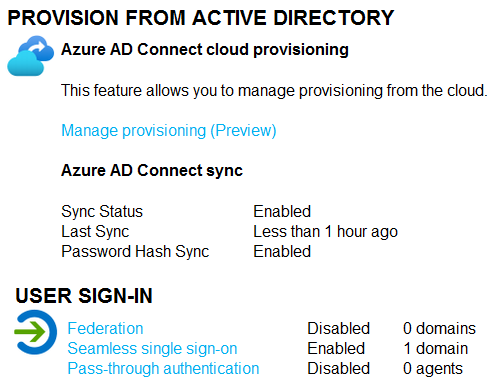

HOTSPOT -
Your network contains an on-premises Active Directory domain named contoso.com that contains a user named User1. The domain syncs to Azure Active
Directory (Azure AD).
You have the Windows 10 devices shown in the following table.
The User Sign-In settings are configured as shown in the following exhibit.
For each of the following statements, select Yes if the statement is true. Otherwise, select No.
NOTE: Each correct selection is worth one point.
Hot Area:

azurecert2021
Highly Voted 4 years, 5 months agoKoba
Highly Voted 4 years, 5 months agodandirindan
4 years, 5 months agoHDZ78
4 years agogizda2
3 years, 9 months agoOne111
4 years, 3 months agoOne111
4 years, 3 months agorxlicon
Most Recent 1 year, 10 months agoitvinoth83
3 years, 3 months agokristhiank
3 years, 4 months agoshree178
3 years, 4 months agomoon2351
3 years, 4 months agond78
3 years, 5 months agoplmmsg
3 years, 6 months agojmay
3 years, 6 months agotejasmehta8819
3 years, 8 months agoMOLLYHAN
3 years, 8 months agosyu31svc
3 years, 10 months agoJayBee65
3 years, 4 months agohamzeh69
3 years, 11 months agobattleneter
3 years, 11 months agojr_luciano
3 years, 5 months agoThomasKong
4 years agonfett
4 years agonfett
4 years ago